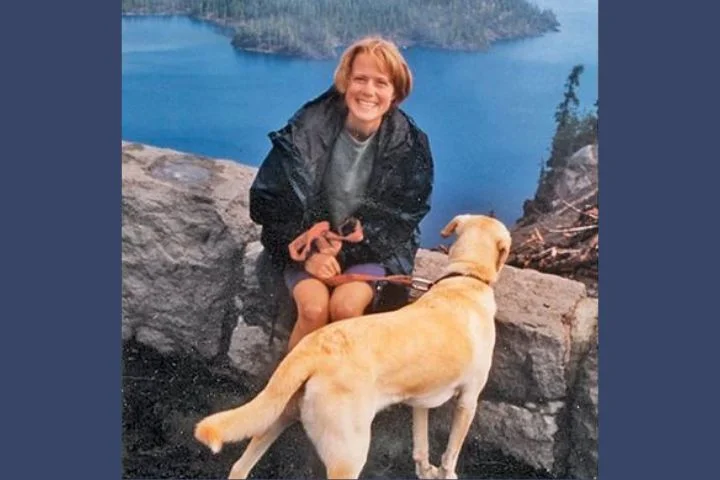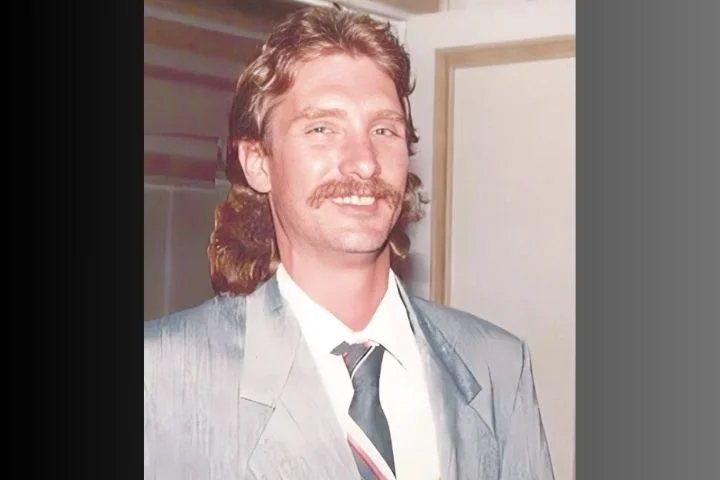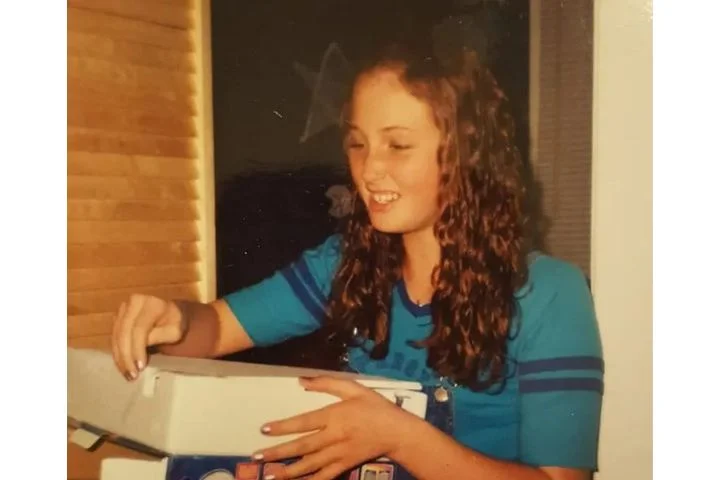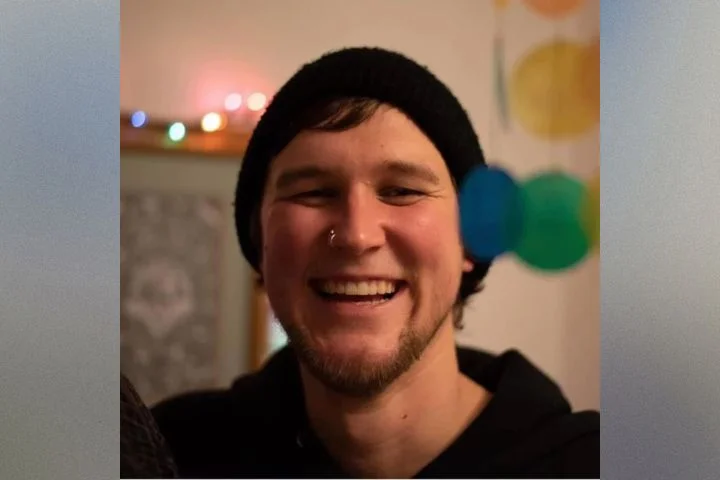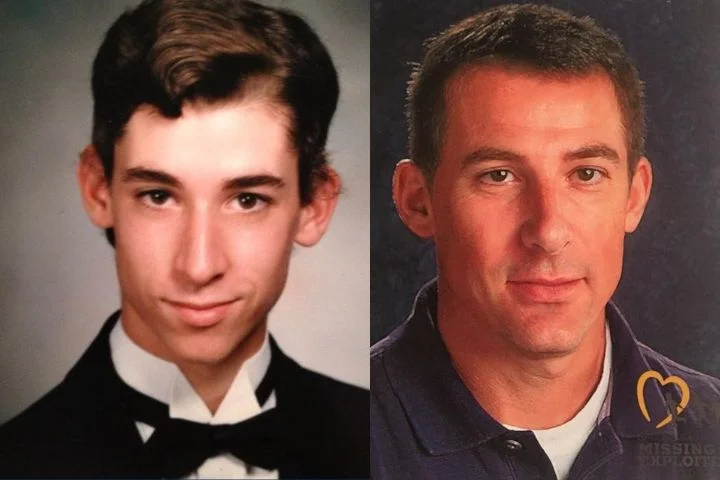Amy Bechtel had a list of things she wanted to get done when she left her Lander, Wyoming home around 9:30 am on Thursday, July 24, 1997. The 24-year-old spent several hours checking items off her to-do list, and at 2:30 pm she went to a local photography shop to ask about getting some pictures framed. When Amy left the shop, she planned to go for a run so she could map out the route for an upcoming race she was organizing in the Shoshone National Forest. She never made it back home and she was never seen again.
Amy’s husband, Steve Bechtel, had gone rock climbing with a friend that day and was somewhat surprised when he got home late that afternoon and Amy wasn’t there. At first, he thought she might have gotten a late start on her run, so he waited for a couple of hours to see if she returned. When there was no sign of her by the time it started to get dark, Steve started calling some of their friends, but none of them had seen Amy that day and didn’t know where she might be.
By 10:30 pm, Steve was growing increasingly concerned that something had happened to Amy. It was unlike her to be out of contact for an extended period of time, so he decided to call the police and report her missing. While he waited for officers to respond, two of the couple’s closest friends drove along the route Amy would usually follow when she went running to see if they could see any sign of her or her car.
Shortly after midnight, Amy’s car was found parked along the loop road near Burnt Gulch in the Wind River Mountains. The car was unlocked, and most of her belongings, including her handwritten to-do list and car keys, were found inside the vehicle; the only thing that was missing was her wallet and fanny pack. There were no signs of foul play in or around the vehicle; it looked as if Amy had parked it there to go on her run and then never returned.
Fearing that Amy had injured herself while she was running, Steve and several of his friends spent the night searching the area for any sign of her. Steve was sure they were going to find her on the side of the trail, perhaps suffering from a broken leg. As hours went by, however, it became clear that Amy wasn’t anywhere along her planned route.
The Fremont County Sheriff’s Department launched a large-scale search for Amy on Friday. Search dogs, helicopters, and dozens of volunteers assisted in the search effort, but they were unable to find any trace of Amy. Dogs followed Amy’s trail for three or four miles away from her car, then doubled back and left the main road, indicating that Amy may have taken a different route to return to her car. They lost the trail on a small side road; it was unclear if something had happened to Amy there or if the dogs had gotten confused.
The search effort was expanded over the weekend. Searchers used horses and ATVs to scour the backcountry while the Civil Air Patrol conducted an aerial search using infrared radar, hoping to spot a heat signature that could lead them to Amy’s location. Rain, thunder, and hail moved into the area Sunday afternoon, hampering the search. Temperatures that night dropped into the 40s, making it imperative to find Amy before she succumbed to hypothermia.
Fremont County Sheriff’s Deputy Brian Klein told reporters that although foul play hadn’t been ruled out, they hadn’t found any indication to suggest it had taken place. He also noted that there were bears in the area where Amy had parked her car, so they had to consider the possibility that she might have been attacked by one. By Sunday night, however, they hadn’t found any evidence of a bear attack.
On Monday, officials asked for anyone who had been on Loop Road near Lander on the day Amy went missing to contact them; they were hoping someone might have witnessed something useful to the investigation. Fremont County Sheriff Larry Matthews admitted that they still had no idea what had happened to Amy. “Since we haven’t found a darn thing, [foul play] is a possibility…all the options are open.”
Everyone in Lander was on edge after Amy’s disappearance, and as days went by without any sign of her, their concern grew. Ernie Over, the editor of the Lander State Journal, noted, “The longer this goes, everyone’s worst fears bubble to the surface.” Amy was well-known in Lander, where she taught classes at the Wind River Fitness Center and helped run the Wild Iris climbing and outdoor shop. Mattie Sheafor, a manager at Teton Mountaineering, stated, “She is one of the sweetest people I’ve ever met in my life.”
A week after Amy was last seen, officials announced that they were going to start scaling back the search effort. Kim Lee, the emergency management coordinator for Fremont County, told reporters, “We’ve just exhausted all of our areas…we’ve searched the area thoroughly for clues…they are few and far between.”
Sheriff Matthews admitted that there was a possibility that Amy had been abducted, and if investigators believed that this was what had happened, they would expand the search to include areas where someone might hide a body, including abandoned cabins and old mines. Steve told reporters that he had reached the point where he hoped Amy had been abducted because then there was a chance she was still alive; if she had been injured while running, he knew she couldn’t have survived a week out in the elements.
Around 30 detectives were assigned to work Amy’s missing person case. They started by interviewing her family and friends to see if they could offer any insight into her life at the time of her disappearance. Everyone they spoke to agreed that Amy wasn’t the kind of person who would have vanished voluntarily; she loved her job and had a close relationship with her husband, parents, and siblings. It was completely out of character for her to be out of contact with her loved ones for any length of time.
The Wyoming Department of Criminal Investigation sent around two dozen agents to assist in the search for Amy. They brought a portable crime lab to Lander and started to process Amy’s car for forensic evidence. They had moved away from the theory that Amy had gotten injured or lost while running and were concentrating on the possibility of criminal activity. Investigator Dave King noted, “We don’t think Amy’s on the mountain and that we’ve overlooked her. We’re pretty confident in the search we’ve conducted.”
Amy should have been celebrating her 25th birthday on August 4, 1997; instead of having a party, her loved ones continued their efforts to find her. Hoping to bring in some new leads, they announced that Crime Stoppers was offering a $10,000 reward for information leading to Amy’s whereabouts. Tom Sanchez, who met Amy more than a decade earlier through the running community, added a $5,000 reward of his own, bringing the total amount available to $15,000.
Steve was hopeful that his wife was still alive. “We’re scared and we’re worried, but there’s no reason for us to be distraught, because we don’t have proof either way at this point.” He and the rest of Amy’s family members were kept busy with the search effort; they refused to give up until Amy was found.
After receiving reports from woodcutters about a suspicious smell near Louis Lake in the Shoshone National Forest, deputies and search dogs were dispatched to the area to see if they could find anything. The area was roughly 15 miles away from where Amy’s car had been found and had been part of the initial search effort, but deputies spent two days going back over the area for any new clues. They found a deer carcass but nothing relevant to their investigation.
Two weeks after Amy went missing, investigators converged on the home she shared with Steve, searching it and Steve’s pickup truck for any potential evidence. Sheriff Matthews refrained from naming Steve a suspect in his wife’s disappearance, but told reporters that everyone who knew Amy was considered a potential suspect at this point in their investigation. “We’re just looking for any clue we can get our hands on.”
Steve told reporters that while having someone search his home wasn’t a comfortable experience, he understood why it was necessary. Although he had initially cooperated with investigators, during one interview with detectives and FBI agents, one of the agents accused him of killing his wife. He left the interview and hired a lawyer. He was then asked to take a polygraph examination but declined on the advice of his lawyer.
Those who knew Steve and Amy well jumped to Steve’s defense, insisting that there was no way he had been involved in his wife’s disappearance. In addition to having a solid alibi — he had been rock climbing with a friend in a different county at the time Amy went missing — friends said they had a solid marriage and were very much in love. They had recently closed on a new home and had been in the process of moving when Amy vanished, and they had been looking forward to their future together. Friends noted that by concentrating on Steve simply because he was the husband, police were allowing the true perpetrator to remain at large.
Sheriff Matthews admitted that the search of the Bechtel home hadn’t found any incriminating evidence; there was nothing to suggest that Amy had been harmed inside the house. He said detectives hadn’t really expected to find anything to incriminate Steve but had needed to search the home in order to be as thorough as possible in their investigation.
While the sheriff stated that Steve’s refusal to take a polygraph examination was hindering investigators from ruling him out as a possible suspect, he did say that others, including Amy’s father and brother, had been ruled out and were not considered suspects in her disappearance.
As the investigation entered its second month, some members of the Teton County Search and Rescue team admitted that the fact that her friends had found her car and conducted a search of the area might have inadvertently destroyed evidence. By walking along the path Amy was believed to have taken, they likely trampled over any of her footprints that might have been in the area. No one was blaming them — they did so with the best intentions — but it was a hindrance to the criminal investigation.
By the first week in September, detectives had interviewed more than 350 people but had been unable to develop any solid leads and had no idea what had happened to Amy. When they learned that the Russian space station had been over the Lander area on the day Amy vanished, the FBI requested copies of any satellite images that had been taken. Unfortunately, they weren’t of any use.
Detectives received several reported sightings of Amy in the Salt Lake City, Utah area, but they were unable to confirm them. Other sightings came in from New Mexico and Colorado, but it was believed that the witnesses saw someone who simply looked like the missing woman.
By the middle of September, those closest to Amy were starting to fear the worst. The reward for information had been increased to $50,000, but no new leads had been developed. Amy’s parents and siblings started to believe that Steve might know more than he was saying — they were bothered by the fact that he wouldn’t submit to a polygraph examination — and their suspicions drove a wedge between the family and Steve. Amy’s parents, Duane and Joanne Wroe, as well as her brother, Nels Wroe, were vocal about their desire for Steve to take a lie detector test, but he continued to refuse.
While detectives still refrained from calling Steve a suspect in his wife’s disappearance, they said that some of his poetry had been seized during the search of his home and they were concerned about some of his more violent writings. Steve explained that he had been in a punk band when he was younger and that his songwriting had nothing to do with reality, but this did little to reassure Amy’s family.
Nels said he suspected that his sister had been a battered woman, and Steve’s violent songs were “flat-out shocking and consistent with what I’ve been suspicious of for a long time.” Steve denied the claims and insisted that he and Amy had a great marriage. “We were never physically violent towards each other. Ever.”
On September 28, 1997, Steve organized a 10K race to raise money for the search effort. The race covered part of the course Amy had followed on the day she went missing. An entry fee of $12 was charged, and donations were also accepted. All proceeds went to the Amy Wroe Bechtel Recovery Fund. Steve told reporters, “We doing the race out of honor for Amy, plus it keeps an awareness up that she is still missing.”
Three months after Amy was last seen, investigators conducted a search of several old mine shafts in Atlantic City, Wyoming but found no evidence to suggest Amy was in that area. Sheriff Matthews said that the search hadn’t been prompted by any specific information but the mines hadn’t been searched during the initial investigation and detectives wanted to cover all their bases.
By the end of the year, there had been no progress on the case and the investigation was starting to stall. Detectives still had no idea what had happened to Amy after she set off on her jog, but they believed she met with foul play. The FBI spent months trying to locate a man who had been obsessed with Amy when she worked at a Lander café, but they were unable to place him in the area on the day she went missing.
By February 1998, the reward for information leading to Amy’s recovery or the person responsible for her disappearance reached $100,000, but tips were starting to dry up and detectives had no solid leads to follow. Investigators continued to say that Steve’s refusal to take a lie detector test was obstructing the investigation, but friends worried that detectives had developed tunnel vision and were focusing only on Steve while ignoring the fact that Amy’s abductor was still free.
Steve’s lawyer insisted that his client had provided detectives with a detailed account of his whereabouts on the day his wife went missing; the attorney also told reporters that he would not allow Steve to take a polygraph because they were unreliable, inadmissible in court, and prone to false positives.
Years went by and Amy’s fate remained a mystery. Her disappearance was featured on both “Unsolved Mysteries” and the television show “Disappeared,” resulting in a number of tips. Each one was followed up by detectives but none resulted in any new developments. The case stalled and went cold.
While there were still some people in Lander who believed that Steve played a role in Amy’s disappearance, no evidence to support this theory ever emerged. It seems more likely that she was abducted and killed by a stranger. Years after Amy went missing, the public would learn that a man named Richard Eaton called detectives and told them that he thought his brother, Dale Wayne Eaton, was responsible for abducting and killing Amy. At the time, detectives seemed intent on going after Steve and it’s unclear if this lead was adequately investigated.
Dale Wayne Eaton was arrested after he attempted to kidnap the Breeden family from Interstate 80 in Wyoming in September 1997. His brother told police that Dale had been camping in the Burnt Gulch area at the time Amy went missing, but his niece claimed he had been staying with her and couldn’t have had anything to do with Amy’s disappearance. Detectives chose to believe the niece and never questioned Dale about Amy.
In 2004, Dale was convicted of the 1988 mu*rder of Lisa Kimmel; Lisa had been abducted from a rest stop in Waltman, Wyoming while she was on the way to her boyfriend’s house. Her m*urder went unsolved for years until DNA taken while he was in jail for kidnapping linked Dale to the crime. Despite this, detectives still never attempted to interview him about Amy’s disappearance.
It wasn’t until cold case investigators started looking at the case in 2010 that the tip about Dale Wayne Eaton was reviewed again; detectives decided it was time to visit Dale in prison and see if he would tell them anything about Amy. Dale refused to speak about the missing woman, however, and remains a person of interest.
As of June 2023, Amy’s case remains unsolved. While all those involved in the investigation believe she is dead, since her body hasn’t been found her case is still considered a missing person case. Until her k*iller starts talking — or her body is found — her fate remains a mystery.
Amy Joy Wroe Bechtel was just 24 years old when she went missing while jogging in Lander, Wyoming in July 1997. She was a sweet and friendly young woman who loved running and taught fitness classes in Lander. Amy and her husband had been married for a little over a year when she vanished; although he was initially a suspect, detectives are now unsure if he had any involvement in her disappearance. Dale Wayne Eaton has recently emerged as a more viable suspect but has refused to speak about Amy’s case. Amy has blue eyes and blonde hair, and at the time of her disappearance, she was 5 feet 5 inches tall and weighed 110 pounds. She was last seen wearing a yellow tank top, dark-colored shorts, Adidas running shoes, a gold wedding ring, and a Timex Ironman Triathlon watch. If you have any information about Amy’s disappearance, please contact the Fremont County Sheriff’s Office at 307–332–5611.
